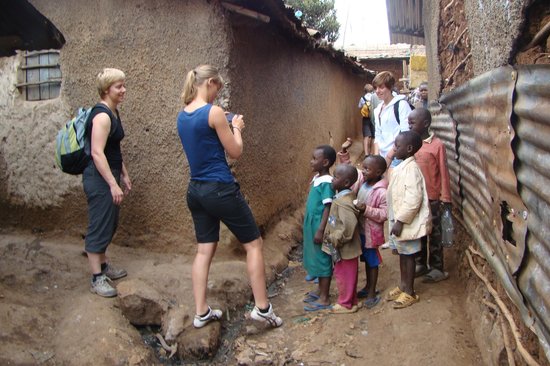Pro Slum Tours in kenya
This is ranked the second largest slum is sub Saharan Africa second to Soweto slums in South Africa. The name 'Kibera' is a Nubian word for 'forest.' The original settlers were Sudanese soldiers who settled there after fighting for the British in World War One. The Kibera slums are located in an area 5 kilometers southeast of City Centre Nairobi. It is the most populated informal settlement in East Africa, housing about one third of Nairobi's population.
 |
| A Boy sitting next to sewer lines in Kibera |
Housing in Kibera, it is sad to note that many Kibera slum dwellers are tenants to those living within and outside the slums. 90 % of the residents in Kibera are tenants who are not able to pay for their monthly rents regularly. Thanks for the UN - Habitat for constructing the New 600 units at the Kibera decanting site. The construction is underway. Hopefully, the buildings will be occupied by the Kibera residents many of whom cannot pay their rents currently. They are expected to sublet other rooms in order to meet the monthly rent for the new houses once they occupy them. Good luck.
 |
| Volunteers visiting one of the Kibera villages |
There are few schools within the Kibera slum run by well wishers. These schools are run by donations from individuals and corporate bodies which occasionally donate items like: food, books, and desks, pens, building materials and teacher's salaries for the volunteer teachers. The case study is the Baraka Za Ibrahim Children Centre which is a school offering education to kids as from pre - unit, primary upto secondary level on charitable basis. All activities are run by donations from well wishers. Orphan children are accommodated within the centre which also offers boarding facility in tiny iron sheet rooms. A small kitchen is in place for the preparation of lunches and supper. The Classrooms, kitchen, boarding rooms, toilets, mud walled staff room, children playing ground are all crowded in an area of about 1 acre of

Comments